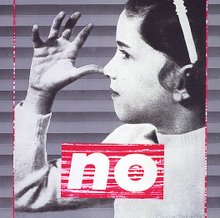Some day my prince will come. Apparently there's been a bit of grumbling about Disney' film, Enchanted. Slate's Dana Stevens complains that the movie uses crass consumerism as a band-aid for life's problems. When in doubt, charge it! But it's not merely the act of spending, it's the "femininity-enhancing, wallet-reducing princess clothes" that are purchased in the film that Stevens finds so worrying. "Does these little girls' happily-ever-after consist only in getting Mommy to buy the right dress?" she asks.
Stevens forgets that every Disney film is merely a marketing venue for their new product line. This subliminal messaging of little girls in pretty dresses is exactly what Disney is banking on to keep its coffers full. Disney has gone princess crazy, manufacturing everything from princess-themed baby-ware to princess salons and high end princess wedding dresses. Every benchmark in the life cycle has been feminized, royalized, and Disneyfied.
But who can blame Disney for capitalizing on consumer trends? As heartbreaking as it may be to dash our childhood illusions of the benevolent visionary creating cartoons with the sole intention of entertaining children, Disney is a notoriously ruthless company willing to brand anything the consumer wants. If there was a call for princess-themed tampons, I'm sure Disney would answer.
I don't necessarily agree that the "ever increasing marketing to younger and younger girls of an adult sexualized version of the princesses is concerning," as Tomi-Ann Roberts, a professor of psychology from Colorado College, says. Like many girls, I went through an intense princess phase where I refused to wear anything but dresses and often went out wearing a tiara. Yes, I was that girl. Yet, somehow, I grew out of it and became the good little feminist you know and love. Even Disney's head of consumer products noted that girls tend to drop the princess brand by age 6.
Furthermore, I don't think that when little girls are playing princess they are playing submission and helplessness. There's a difference between "waiting for your prince to come" and enjoying twirling around in frilly dresses. Though it is telling that Disney has largely ignored the more self-assured (and ethnic) princesses Mulan and Pocahontas to focus its marketing on Cinderella, Snow White, Sleeping Beauty, Ariel, Belle and Jasmine. Even though it could be argued that Belle and Jasmine were very gutsy characters, and Jasmine was Arab, both exhibit more sexualized characteristics, "with more skin showing and bigger heads, eyes and breasts" as Roberts observes. I do, however, give Disney points for creating the first black princess with the forthcoming Princess Tiana, though I suspect it is just a ploy to attract the African American consumer to Disney products.
When you're a child, you are a big ball of id who wants everything in the toy store. You want to be the princess you see on screen. When we went to the pool in the summer, I used to play Little Mermaid and flip my hair like Ariel. It was only when I grew up that I realized how strange that film is: She wants to give up her whole existence for some cute guy she never even talked to? And how do those darn shells stay in place, anyway? Owning Disney merchandise and pretending to be royalty will not permanently warp children. However, if you don't teach your children the value of money and instead let them think that happiness is only a credit card-swipe away, well, you might end up with a spoiled little princess who grows up to be a debt-ridden adult.
Total uses of the word "princess" in this post: 14
Friday, November 30, 2007
Subscribe to:
Post Comments (Atom)



1 comment:
my biggest problem with Enchanted was that it promoted the idea that if a whole bunch of rats are in your apartment, and cleaning it, that it is ok to pick them up with your bare hands and just toss them into the hallway of your building. But other then that it was a good fun movie.
Post a Comment